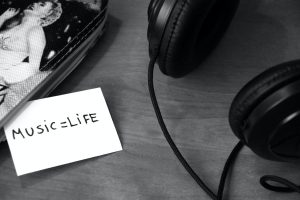Chapter 3 – Writing Within & Across Subjectivities

Many instructors and academics will tell you that “objectivity” is the main goal in college essay writing. But many of the same people will also tell you that true objectivity, in the abstract, is difficult, if not impossible, to achieve. It is clear that the words we choose, the ideas we present, the ways we structure and organize these ideas, and our understanding of the world at large all help to define and inform the braided thread of our academic observations. These frequently subconscious choices shape our writing and thinking in ways that actually center our biases and showcase the subjective nature of our approach to essay writing. Only through addressing our subjectivities in relation to the “texts” we are exploring and creating can we provide a sense of objectivity. One that exists in an informed and evolving relationship to our subjective experience, not apart from it. Added to this mix is the recurring theme these days in many college composition courses to encourage students to write from the basis of their own lived experiences. From the very center of their entangled and living collection of personal subjectivities. We can see that the drive for “objectivity” must be carefully reconsidered if it is to be taken seriously in the modern college essay writing process.
There is also, however, a fear that we can indulge in our subjectivities to the extent that our arguments and research become flawed. If we only ever speak and write about ourselves, how can we grow beyond the potentially limited frames of our own perspectives? Sometimes writing from the subjective position makes it harder to see the world outside of our own limited frames of reference. But this is not necessarily true. Especially if we are aware and in charge of the process. We must learn how to use our subjectivity and lived experience to enhance our ability to engage, understand, and incorporate ideas and experiences unlike our own, not to reject or dismiss them. By harnessing our own position(s) in relation to the world we encounter, we can highlight our subjective position, demonstrate an awareness of our own perceptions in the shaping of our text, fill in the necessary spaces with relevant source materials that develop, challenge, or support our subjective frames, and ultimately present a thoughtful essay within which the reader can find an identifiable, engaged position to evaluate. This is because they will understand your perspective in a deeper way. The subjective/objective essay captures your voice, which helps to acknowledge the writer’s presence. But it also goes beyond your voice to create a conversation between your ideas and those of some relevant, reliable sources. Having this clear indication of the conversation that is present in academic writing then allows the writer-as-subject to step back and present the work with as much honesty as can be mustered.
It is vitally important to learn to embrace your own voice as you present yourself in order to create a level of trust with your readers. What is it to write about race, religion, poverty, pandemics, gender, police brutality, immigration, and all of the other topics you are asked to engage in a writing class, from the standpoint of your own subjectivity (or multiple subjectivities)? How does a Trans student approach the topic of gender and sexuality in an essay as opposed to a cis-gendered student? How does a student from an immigrant family discuss immigration reform in a way that is enhanced by their experiences, and not minimized or unduly biased by them? How does a student with a strong background in a particular religious faith tradition approach an assignment they feel is biased against the teachings of their chosen cultural or religious background? What about a student from the Navajo nation, China, Nigeria, or from another culture that values community, communal identity, and responsibility over the development of individual voice, identity and personality? How does this student respond to the prompts in writing assignments to “develop their own voice and perspective”?
As we can see, writing does not occur in a void. We write about topics from within certain positions. From the deep well of our lived experiences we bring to any writing assignment or exercise. We are the sum total of the collected experiences that we, and our ancestors, bring to the current moment. But we must also learn not to be trapped or limited by those same positions. So how do we become fully aware of our own subjectivities, our own intersectional web of personal and collective identities, and mobilize all of them to help us write engaging, well-developed, and complex essays and not, instead, trap us within the confining walls of our own limited experiences and perspectives? How can we “be ourselves” in these assignments while also opening ourselves up to new ideas, new possibilities, new perspectives, and new solutions to the problems we collectively face in the world?
Part of what this textbook is designed to achieve is this delicate balance between being trapped, or limited, by our own perspectives and ideas, and being able to successfully integrate them into an open dialogue with others in ways that elevate and expand the possibilities for growth, knowledge, and wisdom to be gained and shared in intentional, diverse academic contexts.
Learning Environment

The learning environment within which students are asked to participate should reflect an atmosphere of safety, mutual respect, and support for the various perspectives and experiences we all bring to the space. This begins with the instructor. Your instructor should be working to provide a safe, welcoming, and expansive learning environment which establishes and honors openness, patience, inquisitiveness, and diversity of thought, opinion, and experience. But this does not stop with the instructor. Students, also, should engage the materials, and each other, in a spirit of mutual respect and open dialogue. It is not required that you agree with one another, or the instructor, on matters of politics, religion, culture, or any other topic in order for you to do well in the class. But it IS a requirement that we ALL treat each other with the dignity, kindness, and compassionate care that will allow us all to thrive and grow in the course. We can disagree, but we must do so respectfully. We can agree, but we must do so substantively. Whatever the case, if we cultivate an atmosphere of mutual respect and fairness from the beginning, the chances of that atmosphere permeating all that we do together in the course are much higher. And the chances of everyone thriving and succeeding in the course grow exponentially as well.
Understanding Assignments

How do we understand assignments that seem to ask us to explore ideas and concepts that live outside of our own comfort zones, life experiences, and chosen belief structures? Often, your instructor will provide writing prompts and examples that are exactly that: examples. Your instructor should be able to provide alternative examples and options for any student who finds the original assignment or writing prompts to be too problematic, emotional, or otherwise fraught with cultural complexity and personal attachments. Your instructor is likely using the chosen subject to elicit passion and energetic focus from you. Try to understand what the core skills and tasks are that you are being asked to develop. Try not to let yourself get too caught up with specific examples. Ask questions when you need to do so, and remember that it is often a good thing, from an academic perspective, to explore ideas outside of our own belief systems, customs, cultural markers, and identity structures.
Often this is where the most learning and transformational growth can occur. But nobody has the right to force you to exist outside of your own subjectivity. as a writing student, you should be encouraged to explore the world of ideas outside of your own experiences, but you should never be made to feel that you must do so, or that your own ideas and beliefs are not welcomed into the class or into the college environment (especially if presented in ways that do not infringe on the rights and beliefs of others). If you do not understand an assignment, or aspects of it seem disorienting, intimidating, or disrespectful to you and your own specific web of intersectional identities, please reach out to your instructor, and possibly the tutors, to help you either clarify the assignment’s expectations and parameters or to inquire how you can possibly alter the assignment to not be as alienating, intimidating, or disruptive to your own educational experience. Often there is a great deal that can be done to accommodate students in ways that satisfy the core expectations of the assignment while not offending or marginalizing the student further with regard to the subject matter or ideological approach of the teacher, the course content, or any other relevant variable.
Flexibility & Self-Advocacy

In one sense, a college writing course is supposed to create an environment where we are given incentives to step outside of our own subjective experiences and beliefs in an attempt to see the world from the perspectives of others. This is one of the great powers of academic writing: the ability to provide us a solid bridge into the perceptions and reasoning of the other. But also, we are encouraged to find and express our own voices, perspectives, and subjectivities in and through the assignments we encounter in the course. So how do we know when we should do the one and not the other? How do we achieve a balance between expressing ourselves and being open to new ideas, perspectives, and experiences? How do we know when to set aside our own biases and beliefs in order to expand and grow as thinkers and writers, and when to begin from those same carefully considered and articulated biases and beliefs in order to dive deeper into the foundation of our own identities? There is no simple answer to this. Like everything else in the writing classroom, this is a process with no “one size fits all” perspective. But there are a few things to be aware of as we negotiate these seemingly opposite poles of authority and experience in the development of our writing. Becoming aware of our own subjectivities is the starting place. Being curious is another. Staying open to adapting, expanding, or otherwise altering our ideas is the next step. Remembering that we are not our ideas is another essential thing to remember. At the end of the process, you may have totally changed the way you think and feel about a particular topic. Or, after carefully considering both your own beliefs and experiences AND those of others, especially those that differ from your own, you may emerge with greater respect and understanding of the other, but still hold to the same positions you had at the start of the process. Either way, you are still you. Your flexibility and openness are signs of the strength of your character. When we are able to “think about our own thinking,” while also engaging and deeply considering the ideas of others, we will be stretched to explore the world in ways we may have not previously anticipated, but we will reemerge from the experience with an expansiveness and openness that will allow us to write about ideas from within, and outside of, a number of different positions and perspectives. When in doubt, ASK!!! We are here to help each other grow.
Cuisine & Music as Metaphors for Essay Writing

If we call something “vegan,” that certainly means something specific, but it also allows the chef a great deal of flexibility on what to prepare. If we call something a salad or pasta or seafood, these terms also each mean something specific, something that sets an expectation for the dish. But each term also allows for a great deal of creativity, expression, and diversity in preparation and presentation. Cuisine, like so many other aspects of human activity, reveals both the profound differences AND striking similarities in how we develop and experience culture.
Cuisine is a characteristic style of cooking practices and traditions, often associated with a specific culture. Cuisines are often named after the geographic areas or regions that they originate from. We often think of “Thai” cuisine or “French” cuisine or “Italian,” Southern,” or “Mexican” cuisine. A cuisine is primarily influenced by the ingredients that are available locally or through trade. Religious food laws, such as Islamic dietary laws and Jewish dietary laws, can also exercise a strong influence on cuisine. Regional food preparation traditions, customs and ingredients often combine to create dishes unique to a particular region. Some researchers have even tried to map the various ingredients used in the world’s different cuisines. What they all have in common is a core set of ingredients which are intentionally prepared for the purposes of providing nourishment and sustenance. The cuisines of the world vary greatly, but all include some combination of these basic elements: protein, starch, vegetable, spices and some form of cooking or preparation. From there, the dishes are only limited by the imagination of the particular chef or the established and emerging traditions of the culture or cuisine itself.
In classical French cooking, for example, the emphasis is on traditional ingredients and methods or preparation. Dishes are prepared in the “traditional French” way, and this is seen as the correct way to cook. They call their sauces “Mother Sauces.” These are seen as the foundational elements of all future cuisine. Frequently, in restaurants with this approach, there are no salt and pepper shakers or other condiments on the table. The dish is prepared as it is supposed to be prepared. It has the level of salt that the chef has determined is the right amount. It is not seen as proper for the person eating the dish to alter the recipe or the experience of the food in any way. Other cooking techniques and culinary experiences, however, are much more adaptive and interactive, and see the recipe as a starting point, from which the chef and/or the diners are encouraged to add their own unique elements to the experience. Recipes may vary by family, town, or region. Or even between individuals within a family.
Neither of these approaches is the “correct” one. They just reveal different philosophies, different approaches, to the way food is created and experienced. Both involve process, both involve tradition, both involve intention and skill, and both involve experience. One approach may rank the importance of tradition and form over that of novelty, individuality, and unique expression. One may rank personal expression per that of “How it has always been done.” No matter the approach, all cuisine still contains the basic elements mentioned above. A precise definition of cuisine is difficult, as is a precise definition of the “proper” techniques and approaches to creating it, but there remains, nonetheless, a core set of elements and clear intentions that allow for any plate of random ingredients to be properly called “cuisine,” no matter the approach or particular cultural spin on it.

Similarly, “Music” is one of the most difficult terms to define, partially because beliefs about music have changed dramatically over time just in Western culture alone. If we look at music in different parts of the world, we find even more variations and ideas about what music is. Although we may find it hard to imagine, many cultures, such as those found in the countries of Africa or among some indigenous groups, don’t have a word for music. Instead, the relationship of music and dance to everyday life is so close that the people have no need to conceptually separate the two. According to the ethnomusicologist Bruno Nettl (2001), some North American Indian languages have no word for “music” as distinct from the word “song.” Flute melodies too are labeled as “songs.” The Hausa people of Nigeria have an extraordinarily rich vocabulary for discourse about music, but no single word for music. The Basongye of Zaire have a broad conception of what music is, but no corresponding term. To the Basongye, music is a purely and specifically human product. For them, when you are content, you sing, and when you are angry, you make noise (2001). The Kpelle people of Liberia have one word, “sang,” to describe a movement that is danced well (Stone, 1998, p. 7). Some cultures favor certain aspects of music. Indian classical music, for example, does not contain harmony, but only the three textures of a melody, rhythm, and a drone. However, Indian musicians more than make up for a lack of harmony with complex melodies and rhythms not possible in the West due to the inclusion of harmony (chord progressions), which require less complex melodies and rhythms.
Indeed, what we may hear as “music” in the West may not be music to others at all. For example, if we hear the Qur’an performed, it may sound like singing and music. We hear all of the “parts” which we think of as music—rhythm, pitch, melody, form, etc. However, the Muslim understanding of that sound is that it is really heightened speech or recitation rather than music, and belongs in a separate category. The philosophical reasoning behind this is complex: in Muslim tradition, the idea of music as entertainment is looked upon as degrading; therefore, the holy Qur’an cannot be labeled as music. There are also the social aspects of music to consider. As musicologist Charles Seeger notes, “Music is a system of communication involving structured sounds produced by members of a community that communicate with other members” (1992, p.89). Ethnomusicologist John Blacking declares that “we can go further to say that music is sound that is humanly patterned or organized” (1973), covering all of the bases with a very broad stroke. Some theorists even believe that there can be no universal definition of music because it is so culturally specific.
Furthermore, calling a particular example of music “Heavy Metal,” “Country,” “Jazz,” or “Hip Hop” all have some specific expectations as to the sound and content of the music associated with those terms. But each also leave much room for creative expression and the various personalities, traditions, and artistry of the individual musicians. Indeed, defining what, exactly music is proves to be quite difficult, as some researches have noted above. Although the exact definition of music varies widely, music contains melody, harmony, rhythm, timbre, pitch, silence, and form or structure. What we know about music so far…
- Music is comprised of sound.
- Music is made up of both sounds and silences.
- Music is intentionally made art.
- Music is humanly organized sound (Bakan, 2011).
A working definition of music for our purposes might be as follows: music is an intentionally organized art form whose medium is sound and silence, with core elements of pitch (melody and harmony), rhythm (meter, tempo, and articulation), dynamics, and the qualities of timbre and texture.
Some music purists seem to believe to role of the performer is to reproduce the piece or the form perfectly, as close to the original as possible, as is often the case with the performance of Classical music. This follows the French cooking approach mentioned above. Others value improvisation and innovation within the context of a traditional form, such as the case with much Blues and Jazz performance. Here again, there is no single “correct” approach, as much as there are different approaches that emphasize different values and produce different results. It all depends on intention. The great Jazz artist Miles Davis once said,

“Sometimes you have to play a long time to sound like yourself.”
What does he mean by that, exactly? Why should it take a long time in order to “sound like yourself”? A long time doing what? Likely, part of what he meant was it took a long time to find the courage to cast off all of the projections, stereotypes, and limiting expectations that others had put upon him, for one reason or another. But he also meant something else. It took him long time to first understand the craft, then master it, and finally make it his own.
Whether one is learning a martial art, a meditation technique or tradition, a cooking style, or a musical composition, they must engage in a prolonged set of exercises to develop a level of precision, skill, and mastery that all emerge from practice and repetition. Repetition and practice. Reflected experience, measured against previous success and failures and against some established, expected level of skill and performance. They must first set aside their own preferences, expectations, and practices to actually learn the form, learn the instrument, the style, the technique. Then, and only then, are they free to alter, change, and redirect the elements to better serve their own creative expression; their own emergent subjectivities. Both Miles Davis and I, your instructor, “break all of the rules of Jazz” when we pick up a trumpet and blow into it. But when I do it, it sounds like a dying whale. When Miles does it, it sounds like the heavens themselves are opening up and dropping a new blessing into the world. What is the difference? Both of us are ignoring the rules of Jazz and “doing our own thing.” But in my case, I have not first developed the skill set, not first learned the traditions, the conventions, the styles, and the form, on the way to my own creative expression. And in his case, he learned all of these things, mastered them, and then rearranged them to better serve his own creativity and subjectivity. His own voice. There is always this tension between tradition and innovation, between restrictive expectations and freedom of expression. But there is an end game as well. We learn the skill sets in order make them our own. As Miles Davis also said, “When you’re playing your own stuff, even the sky ain’t the limit.” And we learn to “play our own stuff” by first learning the terrain. The rules. The nuances of the game. And then we can adjust and innovate to make the forms work for us, and not the other way around.
So, what does all of this have to do with writing the college essay? Quite a lot, actually. In writing, the same is true. Or at least it should be. We find the same tensions between form and freedom, expectation and expression, structure and substance. Calling something an “essay” should conjure a specific set of components and expectations, just as calling a dish “vegan” or a piece of music “Classical” or “Blues” does. However, just as with the examples in music and cuisine, essay writing need not be a template that erases the creativity, voice, and perspective of the individual author. On the contrary, when used correctly, it can provide a series of steps to help the author strengthen, clarify, and amplify their own perspectives, thoughts, and ideas about the world.

Essay writing, like the creation of music or food, emerges from longstanding cultural traditions, rituals, and practices. It emerges from within a set of pre-determined expectations but eventually goes beyond them. The steps and stages of the essay writing process have been developed over the centuries to connect us to the traditions and methods of communicating academic insights, of transferring knowledge and wisdom, in ways which have been found to be useful, inspiring, transformational, and productive over time. But also, they leave room for the emergence of the new ideas, perceptions, voices, and experiences of those who engage them anew in each generation. We are learning these skill sets so we can understand what they are, where they come from, and how they are valuable for producing certain outcomes within, in our case, academic contexts. But we are not learning them simply to learn them. Or to get a grade. Or even to do well in college overall. While all of these are good reasons to become stronger academic writers, the strongest may be that when mastered to a certain degree, these rhetorical skills become a vital part of a growing tool kit for clarifying and amplifying your own voice and perspectives, while engaging and embracing those of others. To write well-crafted academic essays is to be able to enter into complex, often difficult conversations with others, with the aim of finding a common ground of mutual understanding, dignity, and respect for the shared pursuits of clarity of thought and generative truth. Don’t be afraid to take ahold of the essay form and use it for increasing the precision, and expansiveness of your own voice within and beyond this class, and the rest of your academic career. The ultimate point is to become more aware of the process of academic writing and how our own subjectivities can enhance, and not detract, from this process. Like any tool, it doesn’t work for every job or occasion. But when used correctly, and for the right job, you can build a lot of great things in the world with it. Learn the rules to master the rules to make them work for you. Do so, and “even the sky ain’t the limit.”
Let us, then, use this OER textbook, and the steps of the essay writing process, in the same way. They should be guides for us to develop a stronger, more engaging, and sharper academic voice. One that is steeped in the traditions of the form, but not restrained by them. One that is rooted in the strengths of the structure, while remaining flexible enough to accommodate the uniqueness of the moment and of the individual author and reader. As you dive deeper into the process, be sure to think about how and when you might be just “going through the motions,” and when you are more fully engaged in the attempt to both explore and expand your writing voice in academic contexts and in response to an increasingly connected and complex world.
Reading and Viewing
- Please read the following article: Braiding & Rhetorical Power Players
- Please watch the following video: Writing Across Boarders (Parts #2 & #3 can be seen at the end of this first segment.)
Some things to consider after watching the video:
- How do cultural values and expectations shape the way people think, and thus write, in academic contexts?
- How can we be flexible and adaptive to different writing styles and ways of thinking while still following the rules and expectations of the academic writing classroom?
- How do different cultural approaches to writing influence how different students may craft a thesis statement and where they might choose to place it within the essay?
- Is there a correct or better way to write academic essays, or should we look to integrate multiple perspectives and approaches to the format?
- How does your own culture, history and background impact the way you approach new ideas? How do you find ways to stand in your truth, articulate your experiences and knowledge, but also stay open to growth, change and transformation that comes from pursuing an education?

